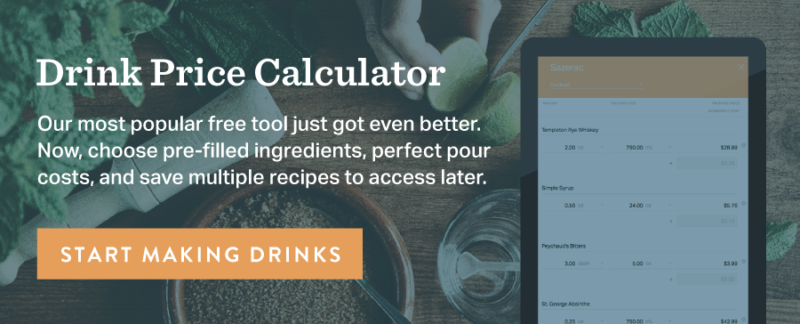


In an ideal bar management situation, the amount of product you sell during a given period of time and the amount of product you use during that same period would line up exactly. But no product is ever as profitable as you think it will be.
In reality, every bar has to deal with theft, over-pouring and breakage. This variance (also known as loss or shrinkage) is one of the biggest detractors from a beverage program’s profitability. And at the very root of a program’s profitability is the quality and granularity of its weekly bar inventory.
To calculate your actual pour cost, you should always factor in variance. Since loss directly increases your pour costs, you should consider anticipated shrinkage in your pricing to create a cushion.
If you want to go by industry averages, shrinkage hovers around 20%. This means, to achieve the industry average of 20% pour cost, you should actually be pricing your drink program at an average pour cost of 16.67% to make up for expected variance.
Let’s say the BevSpot Bar spends $1.00 on every beer. In a perfect world, we could sell our beers for $5.00 each for a 20% beverage cost and an 80% profit. However, if we want this to work in the real world, we need to factor in variance.
Based on the average industry variance, we should assume that for every five beers we purchase, we’ll lose one. This means, we’ll spend $5.00 for five beers but only sell four beers for $20.00, making our total profit $15.00 or 67%. To make up for this anticipated loss, we should increase our beer price by 20% (in this case, $1.00) to ensure we achieve a 20% pour cost and an 80% profit.
Although this is a specific itemized example, remember that our average pour cost of 16.67% is an average, meaning it probably wouldn’t work to price all our drinks exactly at 16.67%. To determine the best pour cost average per category, we have to incorporate how BevSpot Bar’s sales fall into different product categories.

Also, just because the average industry loss is 20%, it doesn’t mean the same is true for your bar; to get more specific, you can calculate your bar’s personal product variance.
If your bar has less loss than average, you’ll be able to keep your drink prices down and still retain a 20% pour cost. This will give you an edge on the competition.
If your bar has more loss than average, try to avoid increasing your drink prices. Instead, you should take these 11 steps to reduce your variance in other ways than higher pricing.
No one wants to be that person who’s scratching their head at the end of the month wondering why their numbers don’t match up. In order to actually see an average 20% pour cost across your beverage program, make sure you factor in expected variance.
Schedule a call with one of our product specialists to find out how we can help.
Start a FREE Trial Today! BevSpot offers full product education and account setup for all customers! No card Information needed!
